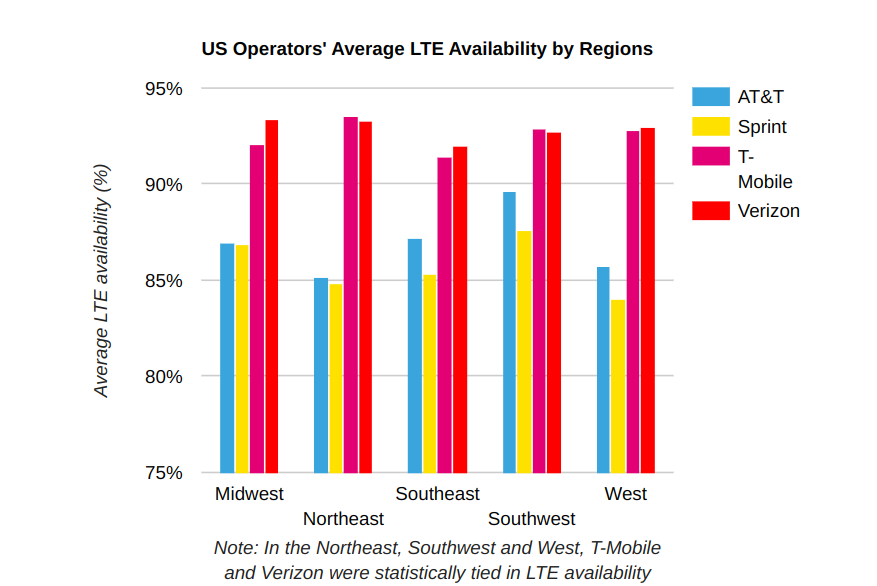New LTE Study Shows T-Mobile And Verizon Are The Only Networks That Matter Any More
For the last decade, the cell industry was ruled by a duopoly. Verizon and AT&T were the biggest networks with the most subscribers and best coverage, and it wasn't even close. But in the last few years, T-Mobile has spent aggressively to try and bridge the gap between its network and the competitors.
According to the latest OpenSignal regional study, the transformation is complete: Verizon and T-Mobile are in a virtual tie for first place, based on availability and speed, while AT&T and Sprint are duking it out for last place.
OpenSignal collects data from hundreds of thousands of smartphone users, all of whom have OpenSignal's app downloaded on their device. The app runs periodic speed tests in the background (or when users activate it), and the data is sent back to OpenSignal. They aggregate the results, and produce the nationwide and regional studies we see.
Crowdsourced data like this is contentious, to say the least. It's less "scientific" than road-testing, which tests all four networks side-by-side in thousands of locations. But you can argue that road-testing is only an approximation of what real-world usage is like, whereas crowdsourced testing has so much data available that it's a more representative look at network quality where people are really using their devices.
No party will actually agree which source is better, of course. Rootmetrics' road-testing shows Verizon as the number-one network and T-Mobile in third or fourth place, so that's the data that Verizon likes to quote. OpenSignal is normally most flattering to T-Mobile, so you can guess which dataset gets cited in the Uncarrier's press releases.

Either way, the most foolproof method to interpret the data is by looking at the changes over time, rather than just who comes in in first place on any one particular study. By that methodology, you can clearly see that something has changed to make T-Mobile's network better, relative to the competition, over the last five years. "The picture was very different a year ago, when Verizon was the clear winner in LTE availability across all five regions, while T-Mobile was the consistent runner-up," OpenSignal said in its blog.
As for the results from this year, it's clear that T-Mobile and Verizon are in a statistical tie for first place in availability. The picture is a little more favorable to T-Mobile on speeds, where its average LTE download speed was better than Verizon everywhere but the West.
